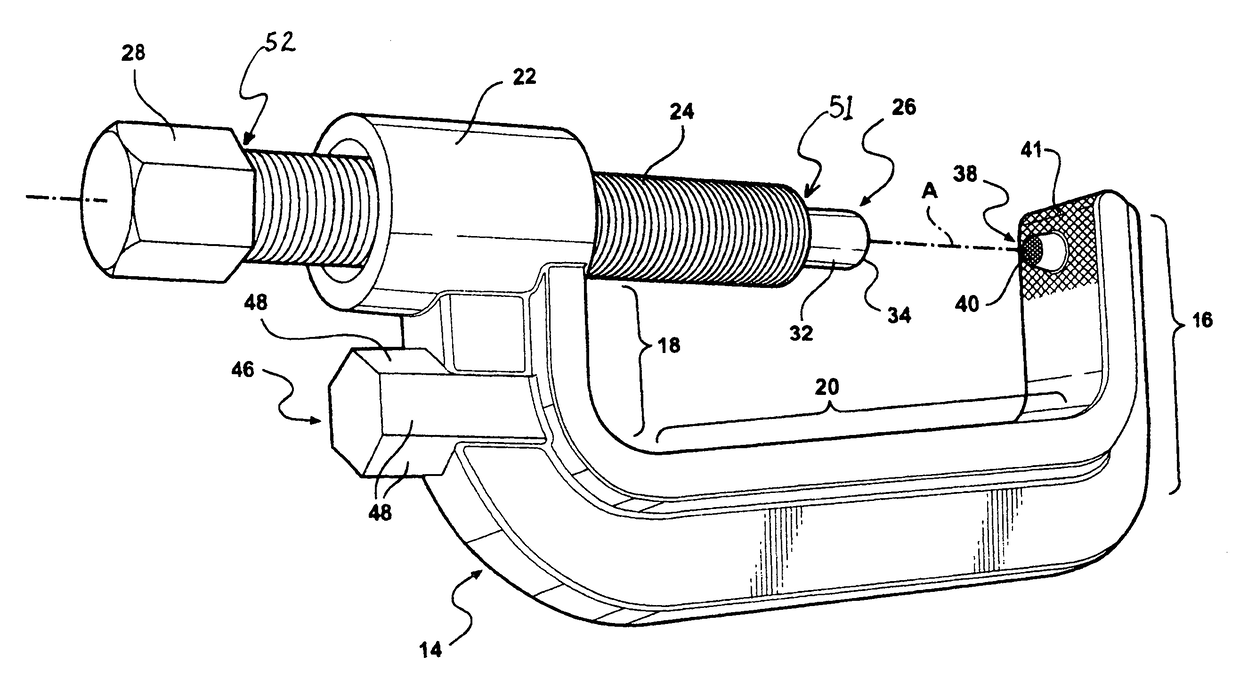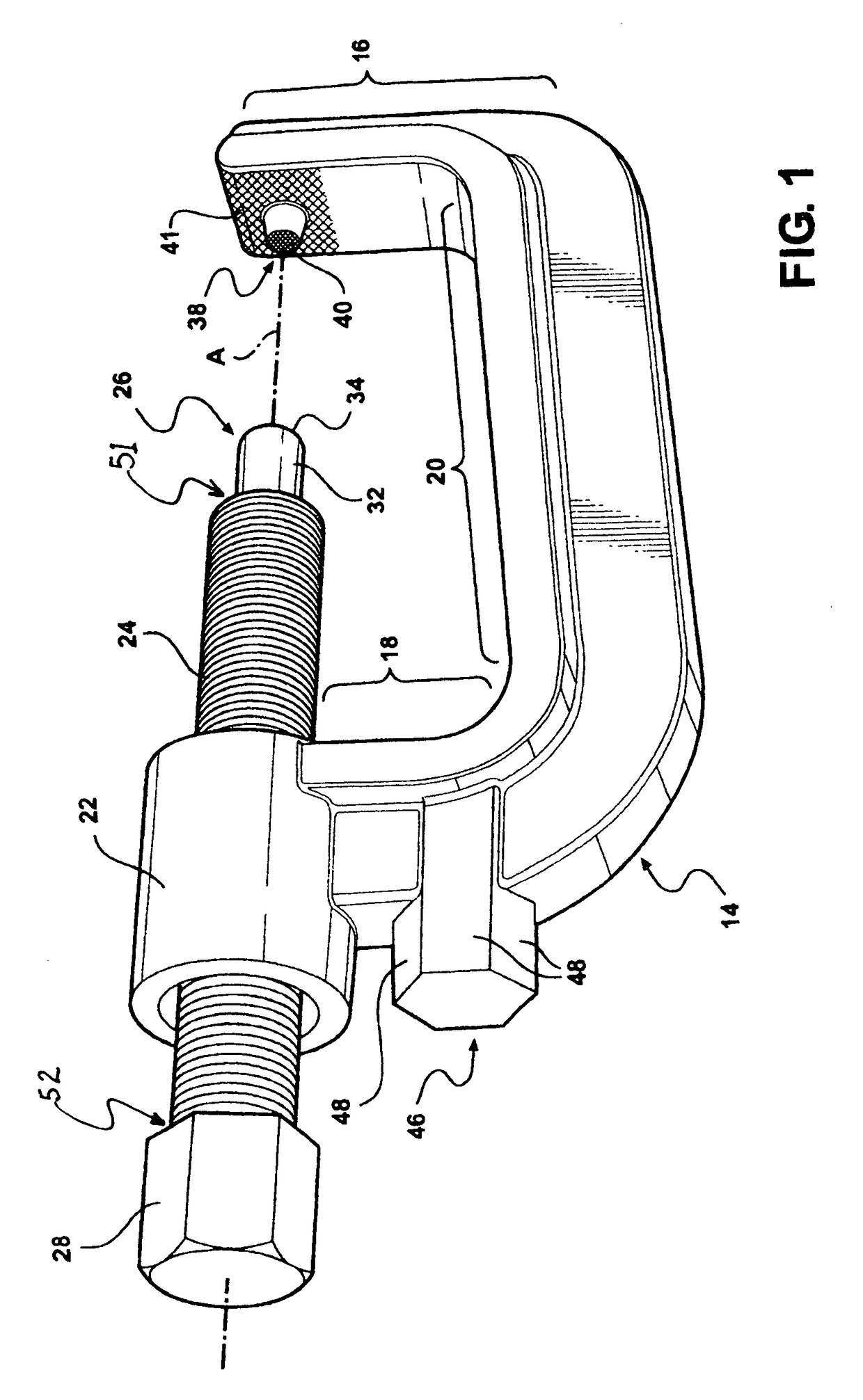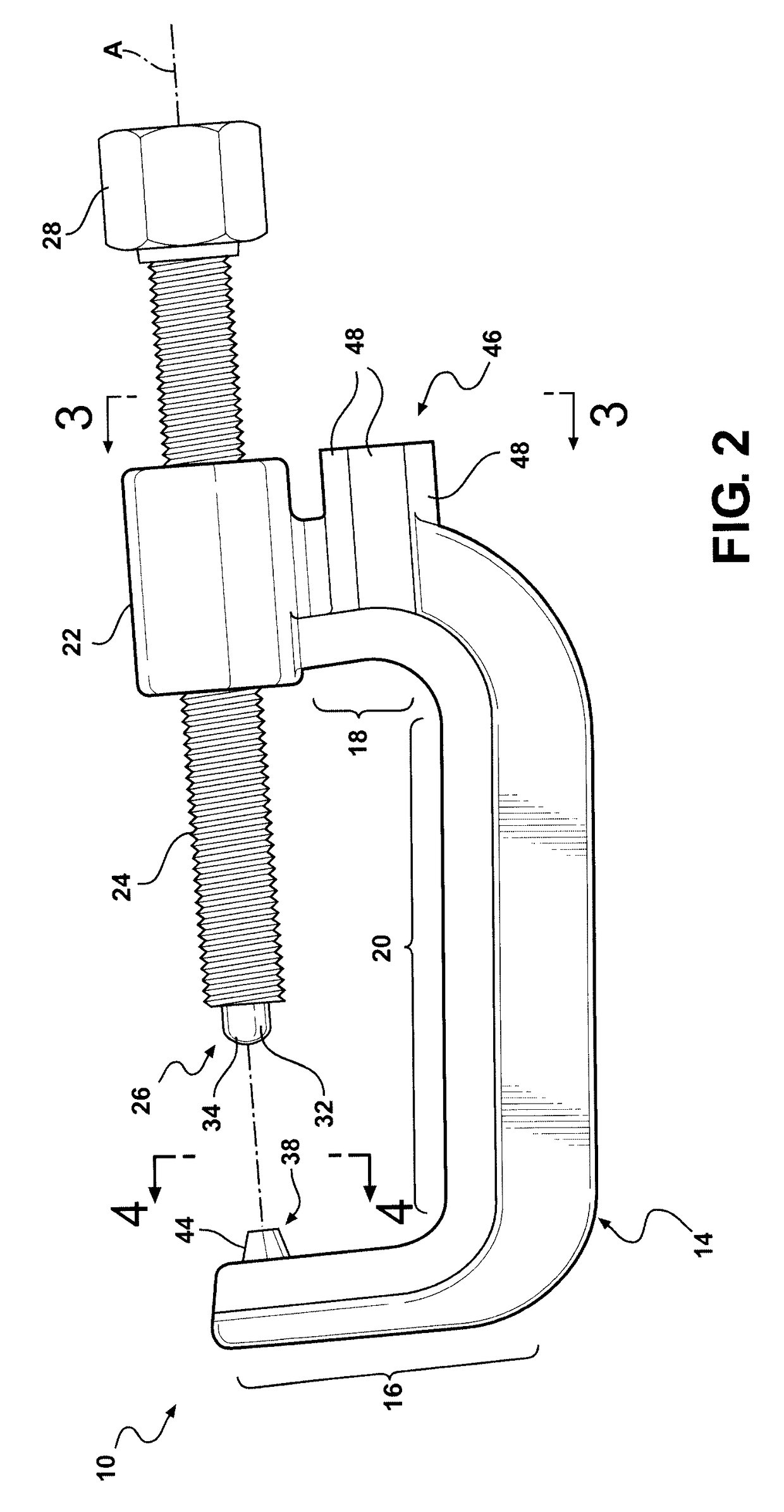Tool for torsion bar repair
a torsion bar and tool technology, applied in the field of tools, can solve the problems of affecting the use so as to enhance the versatility of the subject invention, prevent slippage, and facilitate the use and applicability.
- Summary
- Abstract
- Description
- Claims
- Application Information
AI Technical Summary
Benefits of technology
Problems solved by technology
Method used
Image
Examples
Embodiment Construction
[0025]Referring to the Figures, wherein like numerals indicate like or corresponding parts throughout the several views, an unloader tool assembly according to the subject invention is generally shown at 10. The tool assembly 10 is of the type for removing an adjusting member in a torsion bar 11 suspension system for a motor vehicle. The adjusting member can be a cam, wedge, ratchet or other mechanical or electromechanical device, but in the most common applications comprises an adjusting bolt 12 as depicted in FIGS. 7 and 8. The adjusting bolt 12 is threaded through a cross-nut 13. The tool assembly 10 includes a tool body, generally indicated at 14, having an upper section 16, a lower section 18, and a riser section 20 interconnecting the upper 16 and lower 18 sections. In cross-section, each of the sections 16, 18, 20 are shown having a generally T-shaped configuration designed for maximum rigidity. Preferably, these sections 16-20 are arranged end-to-end into a generally C-shape...
PUM
 Login to View More
Login to View More Abstract
Description
Claims
Application Information
 Login to View More
Login to View More - R&D
- Intellectual Property
- Life Sciences
- Materials
- Tech Scout
- Unparalleled Data Quality
- Higher Quality Content
- 60% Fewer Hallucinations
Browse by: Latest US Patents, China's latest patents, Technical Efficacy Thesaurus, Application Domain, Technology Topic, Popular Technical Reports.
© 2025 PatSnap. All rights reserved.Legal|Privacy policy|Modern Slavery Act Transparency Statement|Sitemap|About US| Contact US: help@patsnap.com



